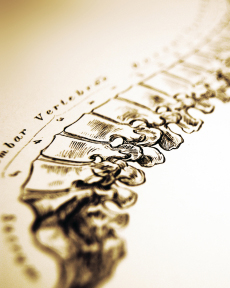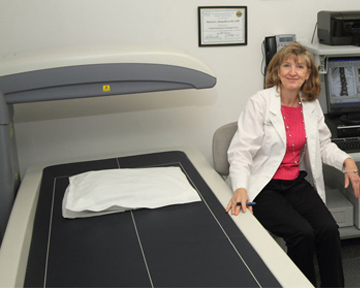What Is Osteoporosis?

Osteoporosis is one of the diseases in which rheumatologists are experts in both diagnosis and treatment in Buffalo. It is a disease in which bones become more fragile and more likely to break.
Osteoporosis used to be considered an inevitable consequence of aging. Typically, bone mass is at its peak in your late twenties to early thirties, and starts to decline slowly with age. Loss of bone accelerates in women at the time of menopause; osteopenia (bone density lower than normal) and osteoporosis (bone density significantly lower than normal) tend to occur with increasing frequency over time in women following menopause. Men tend to develop bone thinning 10-15 years earlier than women. Certain medical problems and the use of certain medications predispose individuals to development of osteoporosis. Osteoporosis also has a tendency to run in families.
What Are The Risk Factors?
The amount of bone mass you have as a young adult and the rate at which you lose it contribute to your risk for developing osteoporosis. Risk factors include family history, inflammatory arthritis, diseases that involve malabsorption, sedentary lifestyle, smoking, heavy alcohol consumption, taking certain medications, thyroid hormones, anti-seizure medications and heparin preparations. Most fractures occur when people fall, and falls tend to occur more often as people get older. Maintaining muscle strength and maximizing balance is important, as is modifying your home to minimize risks of falls.
How Do You Treat Osteoporosis?

Our bone density testing allows us to determine whether bones are thinner than they should be, as well as the rate of their thinning over the passage of time.”
Patricia Harig-Reed,
RT (R) (CDT)
Over the last 20 years, there have been many advances in both our ability to diagnose osteoporosis and our ability to treat it effectively. A bone density scan can help to give us valuable insight. Our bone density testing allows us to determine whether bones are thinner than they should be, as well as the rate of their thinning over passage of time. X-rays are remarkably insensitive in determining thinning of bone. The two tests that are the best are CT scans and DXA (dual x-ray absorptionometry). DXA has several advantages, including much less radiation exposure and much lower cost.
The DXA performed at Rheumatology Consultants of WNY is by an experienced, certified radiological technologist specifically trained through the International Society for Clinical Densitometry (ISCD). All bone density scans are interpreted by one of the Center’s medical directors, all of whom are certified in Clinical Densitometry.
The DXA is fast, painless and easy. The exam typically takes 15-20 minutes. Virtually no preparation is needed. You should wear comfortable clothing, preferably without metal buttons, buckles or zippers.
While DXA is important in determining bone density, a careful history and physical examination is also important, as are laboratory tests. As our ability to diagnose osteoporosis has improved, so has our ability to prevent and treat. In addition to taking medications to reverse or retard progression of bone loss, our expert bone density technologists also review nutrition, exercise programs and home modifications that will help maintain bone strength and minimize risk of fracture.
If you are interested in learning your risk for osteoporosis, please make an appointment today. The Bone Density Center of Western New York is open every Tuesday from 9am to 5pm. We look forward to seeing you!








